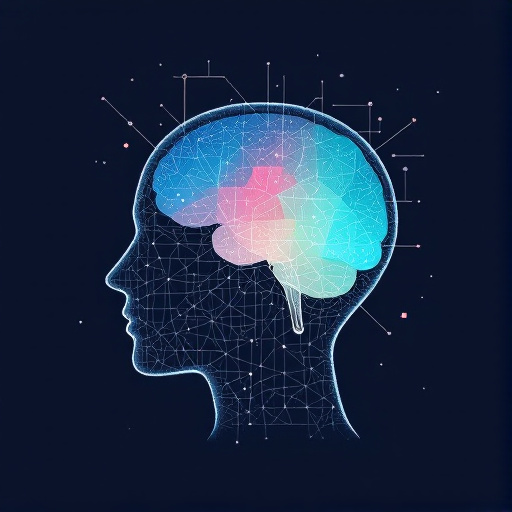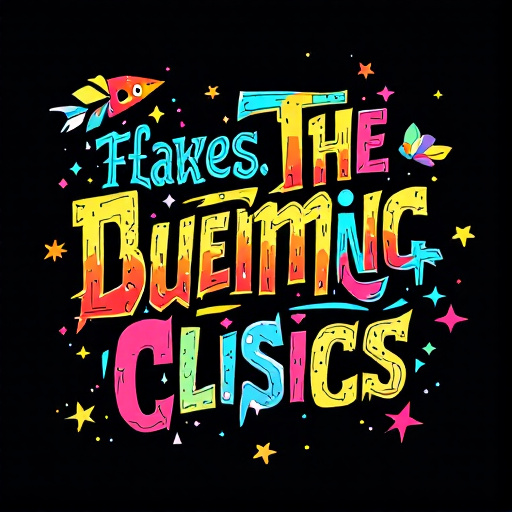Featured Articles
- 9 Essential Psychological Triggers Every Web Designer Must Harness for Maximum User Engagement
- "Beyond Aesthetics: How Neurodesign is Shaping the Future of Web Usability"
- Beyond Aesthetics: The Surprising Role of Color Psychology in Web Design Fundamentals
- Design Disruption: How AI-Driven Aesthetics Are Shaping the Future of Web Design Basics
- Designing for the Unseen: How Invisible Elements Transform User Experience in Web Design Basics
Reimagining Web Design Basics: How Eccentric Typography Can Transform User Engagement
Reimagining Web Design Basics: How Eccentric Typography Can Transform User Engagement
In a world where digital spaces compete for audience attention, the role of typography in web design cannot be understated. Embracing eccentric typography has the power to elevate user engagement, provoke thought, and enhance the overall aesthetic of any website.
The Power of Typography
Typography is more than just the way text looks; it’s about the emotions it evokes and the messages it communicates. According to a study by MIT, 60% of people feel fonts can affect how they perceive the content. Imagine reading a serious article in a playful comic sans compared to an elegant serif font; the difference in impression is night and day.
How Typography Influences User Engagement
Think of typography as the invisible force that guides your journey through a website. When we see an unconventional typeface, we're more likely to stop scrolling and pay attention. A 2016 study by the Nielsen Norman Group revealed that around 78% of online users will scan content before reading it in-depth. The right typography can create a memorable first impression that encourages users to dive deeper into the content.
Case Study: Dropbox
Take a look at Dropbox. When they rebranded, they opted for a unique sans-serif font that not only gave a modern feel but also made their branding more playful. As a result, they reported a 23% increase in sign-ups after launching the new design. Now, that’s a compelling case for changing things up!
The Art of Legibility
Here's where the balance comes in. Eccentric typography can be captivating, but if it's too far out there, it may hinder readability. According to Typewolf, 95% of users prioritize readability over aesthetics in web design. There’s a sweet spot—the magic where style meets function. Use decorative fonts for headings and let more straightforward fonts carry the bulk of the text.
Why Are Users Emotionally Drawn to Typography?
How often do you read something and feel a certain way just because of the font? Well, you’re not alone! A survey by Fonts.com found that 60% of participants have preferred one option over another solely because of the font choice. That sounds like a great argument for adding some spice to your text!
Breaking the Mold: Examples of Eccentric Typography
One standout example is the Mailchimp website. Their quirky, oversized lettering and playful illustrations make for a delightful browsing experience. It’s vibrant, unique, and makes users smile. Who doesn’t love to find a website that feels welcoming and friendly? Mailchimp reports higher user engagement with an increase in interaction rates due to their bold typography.
Conversion Rates and Typography
Now, onto the numbers! A study from Crazy Egg found that websites with appealing fonts can boost conversion rates by as much as 12%. Believe it or not, something as simple as font choice could lead to a significant uptick in sales! Whether it’s drawing attention to a special offer or creating a relaxing reading experience, typography can be your secret weapon to success.
Storytelling Through Typography
Picturing how text relates to visuals can lead to a more cohesive narrative. Typography, in essence, serves as a bridge between content and design. Take, for instance, the minimalist style used by Apple. Their consistent use of sleek typography complements their brand ethos of simplicity and sophistication. It physically tells the story of a user-friendly experience—a compelling narrative that resonates with their audience.
Setting the Tone
Eccentric typography allows brands to set a specific tone. A vintage font evokes nostalgia—a casual brush script font can feel inviting. If your brand were a person, would they wear flip-flops and jeans, or a tailored suit? The font style communicates personality, and that can hugely affect how users perceive your brand.
The Risks of Eccentric Typography
But wait, before you go wild with your font choices! There are risks associated with eccentric typography. An alluring typeface can also deter users if it clashes with their expectations. According to a 2019 article in Smashing Magazine, the right typeface can increase web usability, whereas the wrong typeface diminishes user trust. Make sure your creative choices align with the overall message you’re trying to convey.
Understanding Your Audience
Knowing your audience is key. Do your users prefer modern design, or are they drawn to something nostalgic? Conducting surveys or focus groups can provide insight into how typography is perceived by your target demographic. It’s this information that can help you strike the right balance in design and typography.
Typography Trends to Watch
It’s hard to ignore the impact of trends. For instance, the emergence of variable fonts is revolutionizing web design, allowing multiple styles within a single file. This flexibility is transforming how designers experiment with typography. Web Design Ledger noted that as of 2023, variable fonts are expected to take over around 35% of web typography usage—it's a trend you might want to incorporate into your own designs.
A Design Revolution
Just imagine! Websites could become more visually captivating, resulting in more unique user experiences. As a curious twenty-six-year-old designer, I, myself, trudged through a boring design landscape only to find immense joy in pushing the boundaries of typography. Transformative eruptions of creativity can arise from those brave enough to explore new possibilities.
Future of Typography in Web Design
As we move further into 2024, expect typography to become even more entwined with user experience. With the rise of AI tools that can generate unique typefaces tailored to specific needs, the web design landscape is absolutely shifting. According to a forecast by Gartner, at least 60% of organizational efforts in 2024 will focus on enhancing user experience through innovative design elements, including typography.
Final Thoughts
In summary, embracing eccentric typography is not just a design choice; it’s a pathway to greater user engagement and conversion rates. By skillfully aligning typography with your brand voice and user expectations, you can craft an online experience that captivates and resonates. Now the question is: are you ready to reimagine your web design and unleash the potential of eccentric typography?
Take that plunge, and you might just find your users will be more engaged than ever before—hungry for more and yearning to explore the wild world you’ve designed for them!




